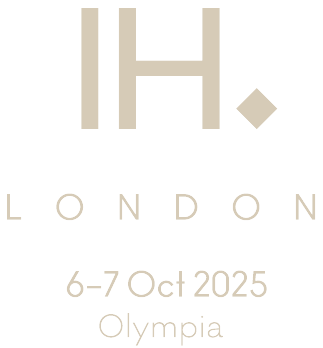Below are some of the principal areas that need to be understood by everyone taking part in the event.
Below are some of the principal areas that need to be understood by everyone taking part in the event.
- An understanding of the Fire & Emergency Procedures of the venue and the protocol for First Aid assistance. All incidents to be reported to the Organizers or the Health and Safety Officer, including near miss accidents.
- Authorised access to the hall will only be allowed for persons who have read and understood the Site Rules & Locations Plan and registered for an Exhibitor or Contractor e-Badge.
- The emergency gangways, as indicated on the Site Rules & Locations Plan, must be kept clear of obstructions, at all times, throughout build-up, open days, and breakdown.
- All work areas must be maintained free from general waste materials that could be a hazard to anyone working on the stand. This also allows for any potential hazards to be clearly visible.
- Hard hats should be worn when working beneath or near overhead working, or if this is not practical, access to such areas should be restricted.
- PPE including Hi-Visibility Jackets and Steel Toe Capped Footwear must be worn during the Construction phase of Build-up and Breakdown.
- Other suitable PPE relevant to the job being undertaken must be worn e.g., hard hats, goggles ear defenders etc. NB: PPE is the last line of defense when all other alternatives have been considered. PPE must be suitable and sufficient for the job and employees trained in its uses and limitations.
- The Health and Safety Representative for either the contractor or the exhibitor (depending on the user) is responsible for ensuring the safe use and storage of flammable liquids and substances, and segregation from waste and other risk areas. Compliance with the COSHH regulations is required.
- Portable power equipment must only be operated by fully trained and certified personnel for the purpose for which it was designed, safety guards must be correctly fitted and used.
- Portable electrical tools must be used with the minimum length of trailing leads and must not be left unattended with a live power supply to it. Trailing leads and electrical cables must not cross over gangways, doorways or fire exits. Any work using power or hand tools must be restricted to the stand space, i.e., no drilling or sawing in the gangways.
- All materials used for construction or displays must be to Local Authority Standards and not less than British Class 1 standards of flammability (see materials for stand construction in the space only stand regulations section).
- A hot working permit must be obtained prior to commencement of hot work (ox-acetylene, cutting/welding, arc welding, gas/oil blowlamps, grinders, tar boilers, soldering).
- Safe working at height is a priority whether using ladders or scaffold towers. Please visit www.stop-the-drop.co.uk for more information on ladder safety or scroll down for the further information on Working at Height.
- All staff working on site (whether from our own company or those of any company contracted by you) are aware and adhere to the current Working Time Regulations (S.I 1998/1883). Guidance regarding these regulations can be obtained by contacting your local HSE (Health & Safety Executive) office or visit https://www.hse.gov.uk/contact/faqs/workingtimedirective.htm
- All construction materials, ladders, trolleys etc. must be removed from the building prior to any public entering the building. Similarly, no contractors will be permitted access for breakdown until all members of the public have vacated the building.
-
Any queries with regards to the above please contact the organisers.
Onsite any violations or concerns regarding the above points should be reported to the Hall Floor Manager or to the Organiser's Office. Internal telephones are located around the hall perimeter to contact Olympia Emergency Services (Fire or Medical) Dial 2666 or dial +44 (0) 20 7598 2666 from an external line.
Risk Assessment
All exhibitors must complete a Risk Assessment that covers their activities during the Open Days.
Risk Assessments do not just relate to the building of the stands. It also needs to cover the activities of ALL exhibitor's staff while they are onsite, whether this is lifting boxes during Build-up or a Product Demo during the Open Days. The Risk Assessment must be suitable and sufficient and needs to identify all significant risks to your own staff, other exhibitors, visitors etc. that may arise from your activities.
Significant risks are those which are reasonably foreseeable in terms of probability and severe enough in outcome to warrant consideration, i.e., they are more than trivial.
The Risk Assessment is the most effective way of documenting, assessing, and controlling risks and under Health & Safety legislation is an absolute legal requirement.
Completing a Risk Assessment does not mean that you are guaranteeing that there will not be any accidents on your stand. It means you have simply taken the time to think through your actions in advance and on an on-going basis. By filling out a Risk Assessment you will be able to reduce the risks of an accident happening or the severity of the accident if it does. If you were unfortunate enough to have an accident on the stand, you may need to prove that you took all reasonable steps to prevent it happening; a risk assessment would be part of this proof. Without it you could be found liable (both personally and corporately).
Click here to find the risk assessment template or for further assistance contact your own company’s Health & Safety Officer or visit the HSE website / http://www.hse.gov.uk/risk/.
- ALL EXHIBITORS MUST COMPLETE A RISK ASSESSMENT to cover their activities during the Build-up (e.g., off-loading vehicles, delivering boxes, setting up display or exhibits), the Open Period (e.g., replenishing stock, demonstrations, sampling) and Breakdown (e.g., removal of boxes, dismantling of display or exhibits, re-loading vehicles). This is SEPARATE to the RA required from the stand contractor.
- The organisers DO NOT require a copy of the risk assessment prior to the exhibition but a copy must also be available on the stand for presentation to the Local Authority or the HSE (Health & Safety Executive) should they visit your stand; both parties have the power to close your stand if they believe there are any unsafe practices.
- If you have booked a SPACE ONLY SITE, whoever is building the stand – either you or a contractor – will need to submit a separate detailed Risk Assessment, which covers the building of and breaking down the stand, together with a Method Statement, when submitting the stand drawings for approval.
We are happy to provide help and advice on completing a Risk Assessment please contact the organisers.
Working at Height
Exhibitors and contractors should familiarise themselves with and adhere to the Working at Height Regulations 2005 (as Amended 2007). A simple rule of thumb would be:
- Avoid working at height wherever possible.
- Use work equipment or other measures to prevent falls where this cannot be avoided.
- If working at height cannot be avoided, use work equipment or other measures to minimise the distance and consequences of a fall should one occur.
Every employer shall ensure that work at height is:
- Properly planned and organised
- Appropriately supervised
- Carried out in a manner which is so far as it is reasonably practicable safe
- Carried out by competent persons or if being trained, is being supervised by a competent person (including the organisation, planning and supervision of working at height).
The Working at Height Regulation 2005 (as Amended 2007) includes, but is not restricted to:
- Suitable and sufficient steps to be taken to prevent, so far as is reasonably practicable, the fall of any material or object and prevent any person being struck by any falling material or object which is liable to cause personal injury
- Take into account of weather conditions that could endanger health and safety
- Take into account the distance and consequences of a potential fall and the need for easy and timely evacuation and rescue in an emergency
- Carried out in an area that is safe
- Utilise equipment that has been appropriately inspected
- Ensure that fragile surfaces and falling objects are properly controlled
- Must be included in the stand Risk Assessment
- Ensure all working platforms are of suitable strength and rigidity for its intended purpose
- Working platforms are to be erected and used to ensure that its components do not become accidentally displaced so as to endanger any person
- Working platforms and any supporting structure shall not be loaded so as to give rise to a risk of collapse or to any deformation which could affect its safe use
The Association of Exhibition Organisers (AEO) have developed an online information resource for use in relation to safe working at height. Please visit www.stop-the-drop.co.uk and read the The Do's & Don'ts of Ladder Safety.
For further information, the Working at Height 2005 Regulations can be viewed at: The Work at Height Regulations 2005
See following link for Working at Height - a HSE Brief Guide http://www.hse.gov.uk/pubns/indg401.pdf


